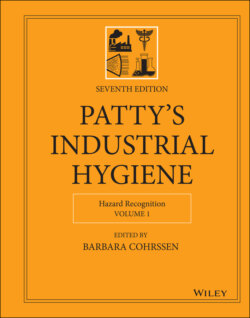Читать книгу Patty's Industrial Hygiene, Hazard Recognition - Группа авторов - Страница 103
1.1 Defining Risk
ОглавлениеDefining the terms, we will be working with will assist in creating a solid foundation for building a standardized language for communicating risk throughout the workplace. Risk is often defined as the probability that harm may occur and hazards are considered to be anything that may cause this harm. Risk is a term that may be applied in many different contexts within the EHS professions, however, its definition is viewed more broadly across the society at large. Our values are what we might potentially lose when we are exposed to risk. Economics, societal position, as well as emotional and physical well‐being, are all categorical values that we share. These values can be improved or lessened based on the risks we choose to either take, decide not to, or forced into accepting either actively or passively. Judgments on accepting risk, which fit well within EHS discussions, are most often based on risk as a function of severity and probability. We take on a relatively high risk of compromising physical health and potential financial loss every time we get into an automobile, but it is apparent that society either perceives this risk vs. benefit decision differently or perhaps does not fully understand the relative risks in making that choice (1). Work‐related decisions about risk are often considered a product of the severity of a given hazard and the probability that an adverse outcome will occur. It is the role of EHS professionals to identify, assess, control, and manage these risks feasibly. This may be a bit more complicated for some hazards that may affect each of the EHS professions differently. For example, a chemical exposure hazard might lead to acute or chronic illnesses, be a source of pollution, and may also degrade the quality of a safety system in the workplace.
